Colin Mustful's Blog, page 2
December 26, 2024
William J. Duley: Executioner, Survivor, and Controversial Legacy
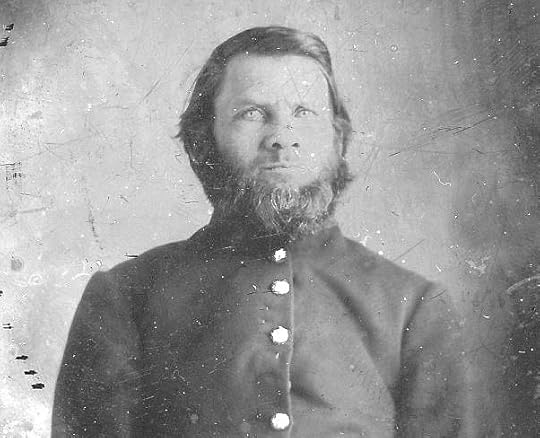 A formal glass-plate portrait of William Duley in his military jacket, probably taken between September 1862 and February 1865.
A formal glass-plate portrait of William Duley in his military jacket, probably taken between September 1862 and February 1865.
On December 26, 1862, Captain William J. Duley swung the ax that cut the rope of the gallows, simultaneously ending the lives of 38 Dakota men for their roles in the U.S. – Dakota War of 1862. Duley, who at the time believed his entire family had been killed by the Dakota, joined the team of men who erected those gallows and was assigned as the executioner. In a letter to a newspaper editor written July 27, 1885, Duley stated that he supervised the gallows and that he was “known to be the person who cut the rope and launched the 38 demons into eternity.”
William J. Duley was born in Ripley County, Indiana, on March 30, 1819. He married his wife, Laura Terry, in 1848, and the two of them moved to Winona County, Minnesota, in 1856 shortly after their two children drowned in the Mississippi River. Duley had a farm and sawmill and in 1857 became a Republican delegate at the State Constitutional Convention in 1857. Four years later, he and his family moved to Lake Shetek, a remote settlement in far southwest Minnesota.
On August 20, 1862, two days after a faction of the Dakota people launched a violent attack on the settlers and agents living at the Lower Sioux Agency, the residents of the Lake Shetek settlement were violently attacked by 25-30 Sisseton warriors and women led by Chief Lean Bear of the Sleepy-Eye band set out on killing and capturing as many whites as possible. During the attack, which lasted several hours, the settlers took cover in a slough, where many of them were either killed or captured. As a result of the attack, 15 settlers were killed, while 3 women and 8 children were taken captive. Twenty-one settlers escaped to safety in the prairie. William J. Duley was among them.
Although Duley escaped with his life, he was shot twice in the left arm, an injury he said had at times left his arm paralyzed and useless. Additionally, three of Duley’s children—Willie (10), Belle (4), and Franklin (6 months)—were killed, and his wife Laura was taken captive along with his son Jefferson and his daughter Emma.
It has been reported that Duley acted bravely during the attack, defending himself and his neighbors, killing the chief, Lean Bear, in the combat. However, according to historian Harper M. Workman, “Everett, Hatch, and Mrs. Cook say Duley was a coward, that he was running when they entered the slough, and never stopped.” On the other hand, Duley’s son, Jefferson, later defended his father, saying “he fought until there was no use in continuing.”
In either case, Duley volunteered to join the army shortly after escaping the attack with his life. After the hanging, Duley joined to punitive expedition led by General Henry H. Sibley against the Dakota in 1863 and 1864. Duley learned that his wife and two of his children survived the attack on December 30, 1862, when he received a letter from Laura. The Lake Shetek captives had been freed the previous month by the Dakota Fools Soldiers, but not before many of them endured deplorable conditions, including rape. In the 1870s, Duley, Laura, and his two remaining children moved to Alabama where William worked as a millwright. According to reports, Laura was quite unwell in the aftermath of her captivity and was said to have never smiled again.
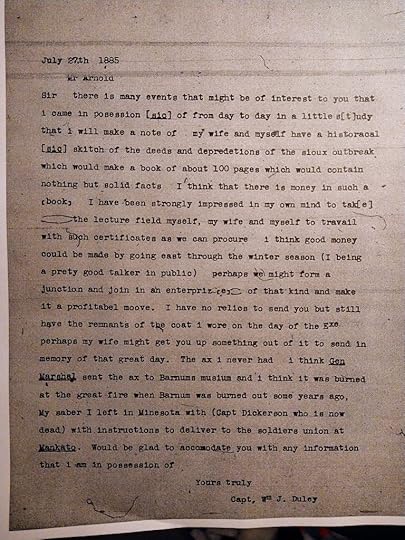 A letter written by William J. Duley to a Mr. Arnold on July 27, 1885.
A letter written by William J. Duley to a Mr. Arnold on July 27, 1885.
William J. Duley and his family suffered greatly at the hands of the Dakota during the U.S. – Dakota War of 1862. He did not seem to have any regrets for his role in the largest mass execution in United States history. Toward the end of his life he pleaded for and received a pension for his volunteer service during and after the war. The ax he swung that heinous day was sent to the Barnum’s American Museum in New York where it was lost to a fire in 1865. In 1885, Duley sought to cement his legacy with a book, telling a newspaper editor “my wife and myself have a historical skitch of the deeds and depredations of the sioux outbreak which would make a book of about 100 pages which would contain nothing but solid facts.” Duley died at age 79 on March 5, 1898, and is buried at Artondale Cemetery, in Gig Harbor, Pierce County, Washington, USA. What, if anything, is William J. Duley’s legacy?
Sources:
House documents. “Report by The Committee on Invalid Pensions – July 30, 1888,” N.p.: n.p., 1888. – https://www.google.com/books/edition/House_documents/Bjcya_-fWpAC?hl=en&gbpv=0
Minneapolis Star Tribune, “Image Surfaces from a Grim Chapter,” by Curt Brown, November 1, 2015, https://www.lrl.mn.gov/LegDB/articles/12622StarTribunearticle.pdf
Duley, William J. Notes on Sioux Massacre of 1862, 1885. N.p., 1885. Print.

Colin Mustful is a celebrated author and historian whose novel “Reclaiming Mni Sota” recently won the Midwest Book Award for Literary/Contemporary/Historical Fiction. With a Master of Arts in history and a Master of Fine Arts in creative writing, Mustful has penned five historical novels that delve into the complex eras of settler-colonialism and Native American displacement. He is also the founder and editor of History Through Fiction, an independent press dedicated to publishing historical narratives rooted in factual events and characters. Committed to bringing significant historical tales to light, Mustful collaborates with authors as a traditional and hybrid publisher. Residing in Minneapolis, Minnesota, he enjoys running, playing soccer, and believes deeply in the power of understanding history to shape a just and sustainable future.
November 12, 2024
Narrating History: Alfred Riggs and his life after the U.S. – Dakota War
When I decided to write my first novel about the U.S. – Dakota War of 1862, I needed a character to tell the story. As a historian, I wasn’t comfortable creating a completely fictional character. So, I searched for a historical figure who could serve as my eyes and ears, and I found Alfred L. Riggs.
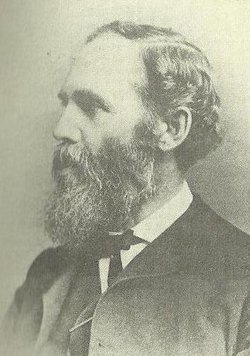 Reverend Alfred R. Riggs, 1837 – 1916
Reverend Alfred R. Riggs, 1837 – 1916Alfred Riggs was born on December 6, 1837, to Christian missionaries Stephen and Mary Riggs. They moved from Ohio to Fort Snelling in 1837 and later established a mission school among the Dakota at Lac qui Parle. Stephen and Mary lived among the Dakota people for the rest of their lives.
Alfred was a fitting choice to lead my narrative. During the U.S. – Dakota War, he was twenty-four years old, a Christian, college-educated, white male. His age and background were similar to mine, which helped me understand his perspective. Growing up among the Dakota, he likely had extensive knowledge of their people, language, and culture, while also understanding the views of white Euro-American settlers displaced during the war. He was a versatile character who allowed me to explore both sides of the U.S. – Dakota War of 1862.
To write my novel, Fate of the Dakota, with Alfred as the central figure, I had to place him in the events. At the war’s outbreak, Alfred was living and working at the Upper Sioux Agency. Once he and his family heard about the war, they, along with several farmer Dakota, fled the area. Alfred stayed safely in St. Anthony, Minnesota, now Minneapolis, for the war’s duration.
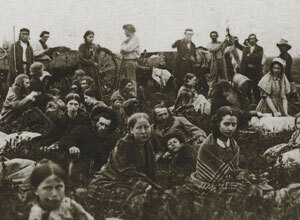 This photo shows Riggs, his family, and his community, fleeing southern Minnesota on August 21, 1862, three days after the outbreak of war. Photo by Adrian J. Ebell.
This photo shows Riggs, his family, and his community, fleeing southern Minnesota on August 21, 1862, three days after the outbreak of war. Photo by Adrian J. Ebell. Fate of the Dakota was my first of five novels about the complex settler-colonialist period of Minnesota history, all set during or before the U.S. – Dakota War. During this time, I never researched what happened to Alfred after the war. While his post-war life wasn’t particularly exciting or surprising, it was interesting for me, as an author who embodied him, to see what became of Alfred Riggs.
In the spring of 1863, the Dakota were exiled from Minnesota and forcibly resettled at Crow Creek, South Dakota. In 1866, due to harsh conditions at Crow Creek, they were moved again to the Santee Sioux Reservation in Nebraska. Alfred followed, continuing his father’s work. By 1870, he established the Santee Normal Training School, an Indian boarding school that provided education and training in various subjects. Although the education was a tool of assimilation and cultural genocide, Alfred’s school was unique in advocating the use of the Dakota language, allowing students to maintain aspects of their culture. One notable student, Charles Eastman Ohiyesa, called it “the Mecca of Sioux country.”
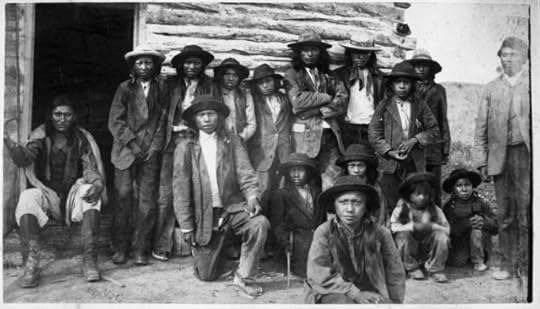 Students at Santee Normal Training School, Nebraska, ca. 1900. MNHS Collections
Students at Santee Normal Training School, Nebraska, ca. 1900. MNHS CollectionsIn 1887, the U.S. government banned Native languages in Indian boarding schools. For six years, Alfred complied. But after failed attempts to repeal the ban, he ended his contract with the U.S. government and continued teaching in the Native language. At its peak, the school had 18 buildings, 480 acres, and over 200 students.
Ultimately, Alfred and his father Stephen played a significant role in the system of cultural genocide that separated Native children from their families, subjecting them to traumatic practices. Alfred died in 1916, having dedicated his life to working among the Dakota people. Despite participating in a misguided practice, he advocated for the Dakota language, building positive relationships. Upon his death, former student Henry Roe Cloud wrote that the reverend “left the world far better than he found it, and the memory of his good works is enshrined in the hearts of thousands of red men and women who are better and happier because of him.”
Sources:
Finding Aids: Santee Normal Training School (Santee, Neb.) [RG2497.AM], Nebraska State Historical Society, Accessed November 10, 2024, https://history.nebraska.gov/collection_section/santee-normal-training-school-santee-neb-rg2497-am/
“Like Father, Like Son: Rev. Alfred Riggs,” Beloit College: Logan Museum of Anthropology Online Exhibitions, Accessed November 10, 2024, https://www.loganmuseumexhibits.com/like-father-like-son-rev-alfred-rig

About the Author
Colin Mustful is a celebrated author and historian whose novel “Reclaiming Mni Sota” recently won the Midwest Book Award for Literary/Contemporary/Historical Fiction. With a Master of Arts in history and a Master of Fine Arts in creative writing, Mustful has penned five historical novels that delve into the complex eras of settler-colonialism and Native American displacement. He is also the founder and editor of History Through Fiction, an independent press dedicated to publishing historical narratives rooted in factual events and characters. Committed to bringing significant historical tales to light, Mustful collaborates with authors as a traditional and hybrid publisher. Residing in Minneapolis, Minnesota, he enjoys running, playing soccer, and believes deeply in the power of understanding history to shape a just and sustainable future.
October 14, 2024
Returning Home: The Dakota’s Journey Back to Minnesota After Forced Exile
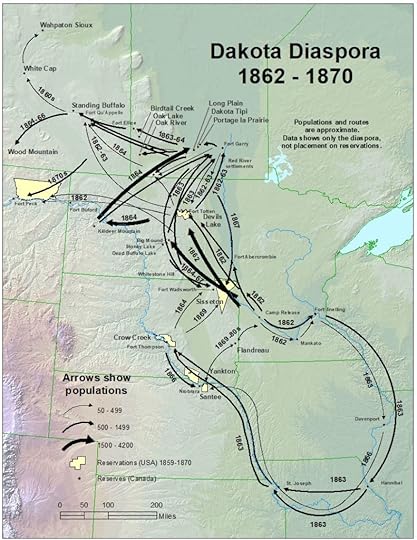 Map of the Dakota diaspora from 1862-1870, courtesy Bob Werner. From the Minnesota Historical Society.
Map of the Dakota diaspora from 1862-1870, courtesy Bob Werner. From the Minnesota Historical Society.
On February 21, 1863, the U.S. Congress passed the Winnebago Removal Act, followed by the Sioux-Dakota Removal Act on March 3, 1863. These Acts, a response to the U.S.-Dakota War of 1862, allowed the President to relocate the Winnebago (Ho-Chunk) and Dakota “beyond the limits of any State” and specifically removed them from “the State of Minnesota.” These Acts marked the peak of a long effort by the U.S. government to control Native peoples and take their land and resources.
Despite these Acts, today there are eleven federally recognized Indian Tribes in Minnesota, including four Dakota-Sioux communities. But how did the Dakota return to their homeland after their forced exile? A full understanding of their return and community growth requires extensive study, but let’s briefly explore the re-establishment of Dakota communities in Minnesota after the Removal Acts.
Although the Dakota were to be moved “beyond the limits of any State,” the U.S. government distinguished between “hostile” and “friendly” Dakota. In the 1866 Annual Report to the Commissioner of Indian Affairs, Indian agent H.P. Van Cleeve noted a friendly Sioux settlement at Lake Hendricks, near the Minnesota/South Dakota border, and others to the southwest. Van Cleeve described these Dakota as “efficient and trustworthy,” viewing them as “advance scouts” protecting Minnesota from “hostile Sioux” further west. These Dakota could stay in Minnesota as long as they remained loyal to U.S. interests.
According to the Lower Sioux Indian Community, many families returned to their homeland, and those loyal to the U.S. during the Outbreak were allowed to stay on Minnesota lands designated for the Dakota under treaties. The 1883 census recorded six Dakota families at Redwood, the site of the Lower Sioux Indian Community. In 1884, Good Thunder, a former Hazelwood Republic member, returned to the Lower Sioux and bought 80 acres of land. Charles Lawrence purchased the neighboring 80 acres, and soon a small colony formed, including other Dakotas who had managed to survive in Minnesota.
The Mendota Mdewakanton Dakota Tribal Community reports that in 1886, government funds helped a group of Dakota buy land at Prior Lake. This is likely the same land mentioned by Ronald G. Stover in his essay Minnesota Dakota Diaspora, where the federal government documented the actions of 208 Dakota and bought three tracts of land for them and their descendants. In 1889, the U.S. Government passed the Appropriations Act, allowing “Indians who were loyal to the United States during the Sioux Outbreak in August 1862 in Minnesota” to return home and receive land. By 1899, as reported by the Mendota Mdewakanton Dakota Tribal Community, seventy Dakota people lived in Hennepin County.
While much has changed since then, it’s notable that earlier this year, the State of Minnesota returned 14,000 acres of land to the Upper Sioux Indian Community. Though a small act of reparations, it is a reversal of the 1863 Removal Acts that aimed to permanently exile Dakota peoples from their homeland. As we continue to reflect on our history and its legacies, I hope more reparations can be made and official removal acts can be justifiably annulled.
Sources:
Sioux-Dakota Removal Acts, Minnesota Legal History Project
This Day in History: The Dakota Exile, May 4-5, Healing Minnesota Stories
H.P. Van Cleve to Governor William R. Marshall, May 19, 1866, Archive.org
Cansa’yapi / Lower Sioux Indian Community, Minnesota Indian Affairs Council
Wolfchild v. U.S., National Indian Law Library, NARF, CaseText
Minneapolis History is Really Sioux History, Mendota Mdewakanton Dakota Tribal Community, Mendota Dakota
Minnesota Dakota Diaspora, Ronald G. Stover, South Dakota State University, OSU Library
After 161 years, land was officially returned to the Upper Sioux Community by Meliss Olson, March 15, 2024, MPR News

About the Author
Colin Mustful is a celebrated author and historian whose novel Reclaiming Mni Sota recently won the Midwest Book Award for Literary/Contemporary/Historical Fiction. With a Master of Arts in history and a Master of Fine Arts in creative writing, Mustful has penned five historical novels that delve into the complex eras of settler-colonialism and Native American displacement. He is also the founder and editor of History Through Fiction, an independent press dedicated to publishing historical narratives rooted in factual events and characters. Committed to bringing significant historical tales to light, Mustful collaborates with authors as a traditional and hybrid publisher. Residing in Minneapolis, Minnesota, he enjoys running, playing soccer, and believes deeply in the power of understanding history to shape a just and sustainable future.
September 6, 2024
Reclaiming Mni Sota Audiobook Campaign – Day 12: A Moment of Mercy
Our final day concludes with Waabi’s profound moment of choice. Faced with the chance for revenge, he recalls the teachings of his parents. This powerful conclusion is not to be missed.
Get the AudiobookJoin us each day as we explore the rich tapestry of Reclaiming Mni Sota. Through these clips, we hope to entice you into the full experience of this moving audiobook. Will you join Samuel and Waabi on their paths to understanding and reconciliation? Purchase your copy today and immerse yourself in their world.
September 5, 2024
Reclaiming Mni Sota Audiobook Campaign – Day 11: On the Brink
Day 11 finds Samuel at a crossroads, injured and alone. His determination to survive is palpable in this gripping scene.
Get the AudiobookJoin us each day as we explore the rich tapestry of Reclaiming Mni Sota. Through these clips, we hope to entice you into the full experience of this moving audiobook. Will you join Samuel and Waabi on their paths to understanding and reconciliation? Purchase your copy today and immerse yourself in their world.
September 4, 2024
Reclaiming Mni Sota Audiobook Campaign – Day 10: Nighttime Escape
Day 10’s clip captures Samuel’s harrowing escape under the cover of night. His survival instincts are put to the test. Feel the tension in every step.
Get the AudiobookJoin us each day as we explore the rich tapestry of Reclaiming Mni Sota. Through these clips, we hope to entice you into the full experience of this moving audiobook. Will you join Samuel and Waabi on their paths to understanding and reconciliation? Purchase your copy today and immerse yourself in their world.
September 3, 2024
Reclaiming Mni Sota Audiobook Campaign – Day 9: A Leader’s Resolve
On Day 9, Bagone-giizhig the younger speaks with fiery resolve. His speech stirs the hearts of his people and marks a turning point. Listen to his impassioned plea.
Get the AudiobookJoin us each day as we explore the rich tapestry of Reclaiming Mni Sota. Through these clips, we hope to entice you into the full experience of this moving audiobook. Will you join Samuel and Waabi on their paths to understanding and reconciliation? Purchase your copy today and immerse yourself in their world.
September 2, 2024
Reclaiming Mni Sota Audiobook Campaign – Day 8: Soldier’s Pride
Day 8 presents Samuel’s transformation into a soldier. His pride in uniform contrasts with the realities of war. Experience his journey from farm boy to infantryman.
Get the AudiobookJoin us each day as we explore the rich tapestry of Reclaiming Mni Sota. Through these clips, we hope to entice you into the full experience of this moving audiobook. Will you join Samuel and Waabi on their paths to understanding and reconciliation? Purchase your copy today and immerse yourself in their world.
September 1, 2024
Reclaiming Mni Sota Audiobook Campaign – Day 7: The Warrior’s Heart
On Day 7, we witness Waabi grappling with loss and anger. His grandmother’s words reveal deep cultural roots and the specter of the Wiindigo. Dive into this powerful narrative.
Get the AudiobookJoin us each day as we explore the rich tapestry of Reclaiming Mni Sota. Through these clips, we hope to entice you into the full experience of this moving audiobook. Will you join Samuel and Waabi on their paths to understanding and reconciliation? Purchase your copy today and immerse yourself in their world.
August 31, 2024
Reclaiming Mni Sota Audiobook Campaign – Day 6: Manifest Destiny
Day 6 explores the concept of Manifest Destiny through Samuel’s eyes. As his family stands on the brink of a new life, we’re invited to ponder the true cost of such a destiny.
Get the AudiobookJoin us each day as we explore the rich tapestry of Reclaiming Mni Sota. Through these clips, we hope to entice you into the full experience of this moving audiobook. Will you join Samuel and Waabi on their paths to understanding and reconciliation? Purchase your copy today and immerse yourself in their world.



